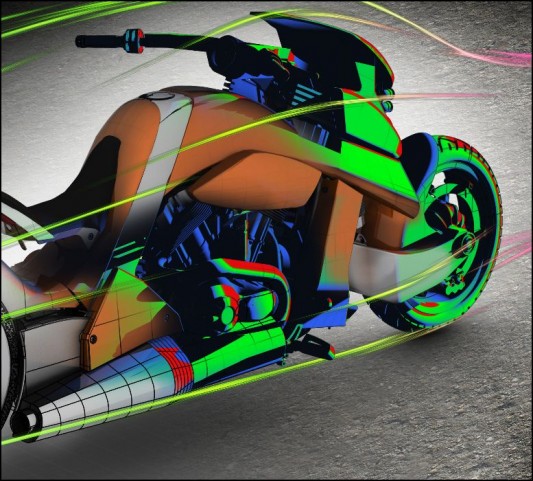New technology allows formerly sequential tasks such as design, analysis, and rendering to be processed simultaneously. Workstation manufacturers and leading software products are all on-board.
Today Nvidia releases Maximus technology, a new way to simultaneously harness the computation power in both an Nvidia Quadro graphics processing unit (GPU) and an Nvidia Tesla general-purpose GPU. Nvidia claims—and major vendors agree—that Maximus is the next step in bringing the benefits of Moore’s Law to the professional graphics desktop.

Since Nvidia first introduced general-purpose graphics processing units, adoption rates seemed to be highest in research facilities, where there’s always a computer scientist around when you need one. Niche applications with big budgets, like oil/gas and medical device manufacturing, also gravitated toward the massive parallel computing possibilities. But for the wider worlds of manufacturing and digital content development, there was less bang for the buck. Analysis or high-resolution rendering could run much faster, but the essential bottleneck of performing tasks sequentially remained.
Previous workstation architectures forced designers and engineers to do compute-intensive work and graphics-intensive work serially and often offline. “Send it to the cloud” is now a common act when there is need for large-scale engineering analysis or high-resolution rendering. Nvidia claims Maximus technology will bring computing home, by providing more parallel processing under the hood. As one Nvidia representative told us in a pre-launch briefing, the goal is reality-based design, where there is so much floating-point power available in the workstation that designers are working with the real-world look and behavior of materials in real time. A car designer working on an interior will specify leather for the dashboard, and be able to see it in photorealistic quality and have it respond in the model with real-world physical behavior, in real time while designing.
Some of this is starting to happen in the gaming community, where the processing requirements are lighter. Game designers are staying in the game engine and working with all the visuals turned on, using Nvidia’s PhysX technology. Maximus promises to make this kind of seamless real-time real-world designing the norm for product development, architecture, and DCC.
With NVIDIA Maximus-enabled applications – such as those from Adobe, ANSYS, Autodesk, Bunkspeed, Dassault Systèmes and MathWorks – GPU compute work is assigned to run on the NVIDIA Tesla companion processor. This frees up the NVIDIA Quadro GPU to handle graphics functions, with both GPU units working in tandem.
Maximus eliminates the rocket science nature of using GPUs. It is a layer of code that manages the relationship between the professional graphics application and the hardware. Out of the gate today there are Maximus-enabled applications and workstations. The list reads like a Who’s Who in CAD, CAE, and digital content creation (DCC)
Workstation owners who have compatible hardware installations can update directly from Nvidia; minimum requirements include Nvidia’s Quadro 600 and Tesla C2075; the Quadro 2000 is more strongly recommended. Hardware vendors shipping new workstations certified for Maximus use include Dell, Lenovo, HP, and Fujitsu. Software vendors and products updated for Maximus include the latest versions of:
- Autodesk 3ds Max and Maya
- Bunkspeed PRO
- Dassault Systèmes Catia
- Ansys Workbench
- Adobe Premiere Pro and the Mercury Playback Engine
- MATLAB MathWorks
The day-to-day result
Software vendors jumping on the Maximus bandwagon are waxing enthusiastically about the possibilities:
- Autodesk says 3ds Max 2012 will be up to 9X faster in Maximus than if using a single CPU
- Bunkspeed says models will render 8x faster in Maximus
- Dassault Systèmes doesn’t provide a number but says Maximus will “dramatically increase the realism of visualization tools available for designers and engineers within CATIA V6.”
The fiercely competitive graphics computer marketplace has reached another milestone, one born of more clever use of existing resources than of a new smaller/faster Intel CPU. The effects of Maximus will ripple through manufacturing and DCC in the next 18 months, unleashing another round of doing more with less.





